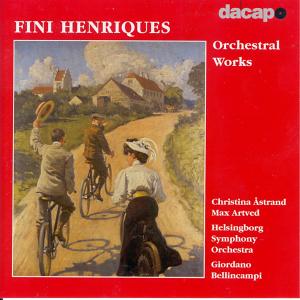The first three pieces are for solo violin and orchestra. Their nature is serenade like in the rapt and sweet manner of Bruch and Saint-Saëns in the case of the Romance and devilishly capricious in the Myggedans. This latter mood spills over into the Djævledans which although it dates from 1920 might easily have been written the day after the Myggedans. These brevities will go down well with violin fanciers and anyone attracted to Bruch and Saint-Saëns. In a relatedly light mood we encounter two czardas grouped under the title Tata. These are in step with the lighter Liszt, Brahms' Hungarian Dances, Massenet and Nielsen's Aladdin music complete with cimbalom and a ghoulash of the usual Budapest rhythmic elements. In all of this Henriques avoids any kitsch souring. Charming stuff.
The Vølund Smed suite throws off the frilly manner embracing a Tchaikovskian yearning to which the Helsingborg strings rise valiantly. A brow-darkening intensity sweeps through the Vølunds klage movement. The Forspil ends the suite with a scourging militaristic march related rather to Tchaikovsky's Hamlet and Francesca than to Strauss or Elgar. Much the same yearning romance runs through the two tracks from Henriques most famous score: Den lille havfrue (The Little Mermaid). The Galop - allegro might have been by the young Eric Coates and makes for a stylistically obtuse contrast. Ah well this is a ballet.
The little suite for oboe and strings includes a honeyedly plaintive prelude, a stridently delicate little intermezzo and an embracingly warm and eager finale.
Essential notes by Claud Røllum-Larsen. These make it clear that despite the Latin overtones of his name he was a native of Copenhagen. His father was a civil servant. He studied with Svendsen and Joseph Joachim. At first he was a member of various Danish orchestras in the capital then, kicking over the traces of such a life, he lived as a chamber musician and composer.
An insight into the music of a composer with a foot in two camps: the Henriques of the Tchaikovskian ballet scores and Henriques the accomplished practitioner of light music and serenatas. The pity is that we do not have the complete score of The Little Mermaid. Likely to appeal not only to the Strauss/Lumbye camp but also those who have diligently collected the Marco Polo and ASV light music discs.
Rob Barnett


